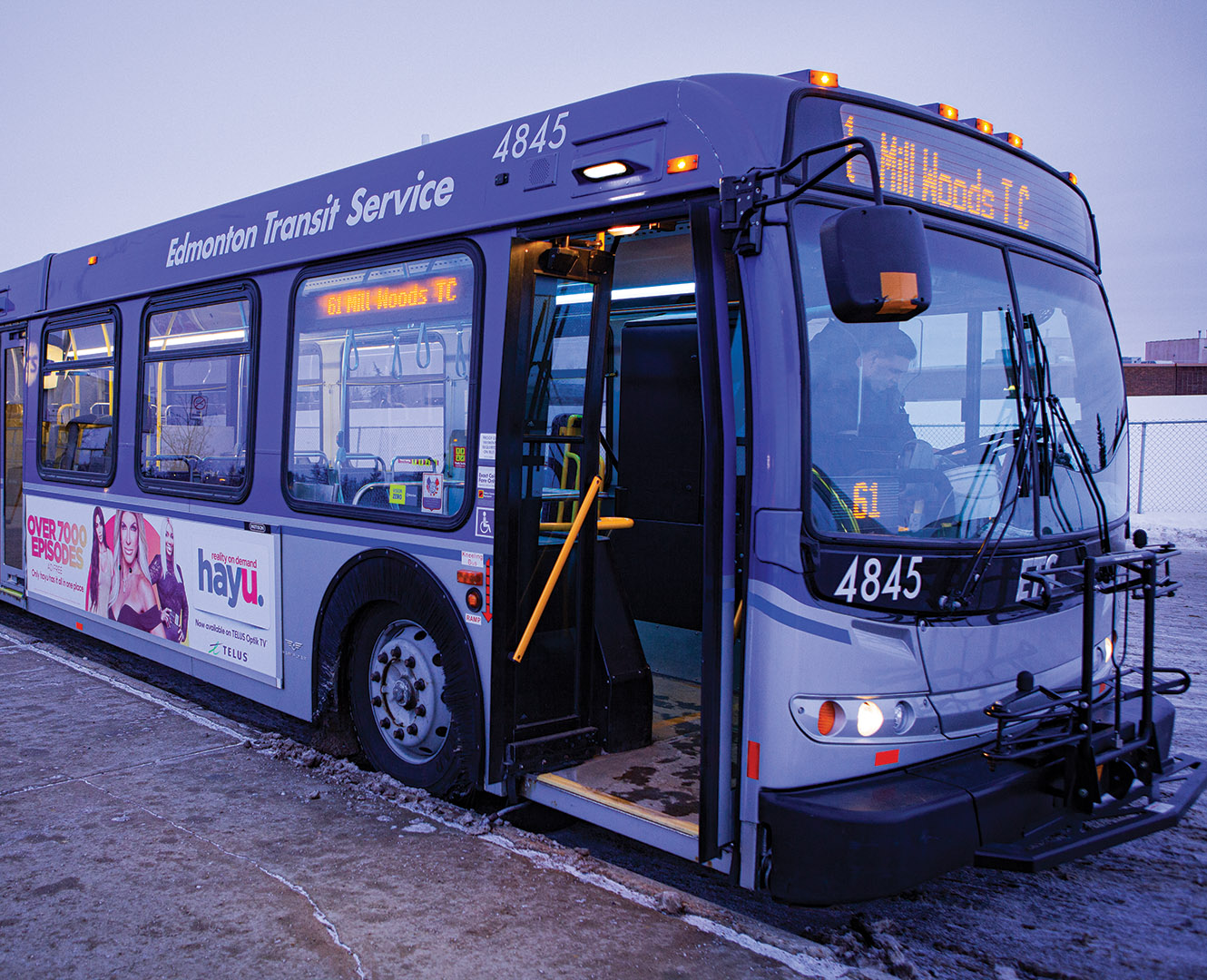By Stephanie Swensrude
Starting summer 2020, Edmonton Transit Service (ETS) is changing every bus route in the city to prioritize frequency.
These changes will see the number of routes reduced from around 200 to 100.
The new network has five types of bus routes. They are designed around providing:
• Frequent routes in central areas of the city for residents that rely on transit as their main way of transportation.
• Express routes for those in outer areas of the city that commute to downtown or to the university-area for work.
• Crosstown routes in outer areas of the city to connect the city’s quadrants.
• Local routes that will connect neighbourhoods to a frequent, express and crosstown network.
• Community routes to connect residents with local destinations, including seniors hubs and recreation centres.
In summary, a student in Millwoods might walk around seven minutes to a local bus stop which will connect them to an express route that brings them to an LRT station. Then they can take the train the rest of the way to NAIT.
The complete overhaul of the transit system debuted in 2018. Edmontonians were invited to weigh in through a public engagement period.
The most common concern is long walking times. With the new system, walk times could potentially increase from an average of five minutes to up to 10 minutes. The city says that 93% of the city’s addresses will be within a seven minute walk of bus stops.
Mary-Anne Thurber, a representative for ETS, explained that there is a focus on getting riders to a major route or an LRT station. However, riders have expressed concerns about these transfers.
“Making transfers … is a major concern among many citizens, particularly among the mobility challenged and seniors,” reads a public finding report on the City of Edmonton website.
There is also a worry that busses are not staggered correctly, posing the risk of trip times doubling if a bus is only a few minutes off schedule. From the same report, a rider commented, “getting a transfer doubles the time it takes to get to my destination.”
The changes go into effect on August 30, 2020, mere days before the fall semester begins. Thurber explained that before the changes go into effect, there will be an outreach initiative to all post-secondary institutions to help with the transition.
“Even if you’re a returning student, all the bus numbers are changing,” Thurber said.
Christian Kurchak, a NAIT business student, currently takes the bus to school. He lives a short drive away, yet he spends 40 minutes on the bus every day.
“And that’s not including when the buses are 10 minutes late, which is quite often,” he said.
The City of Edmonton’s website says that “changes are final” and “public engagement for the Bus Network Redesign ended in December 2018,” meaning that the city will not be accepting feedback on the redesign once it is in place.
The website does, however, read: “The new routes will be reviewed after one to two years.”
You can view the new bus network and start planning your trips online at edmonton.ca.






